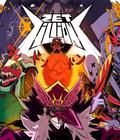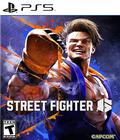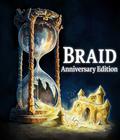Braid was originally released in the late summer of 2008 on Xbox 360, where it became one of the first big notable bona fide indie hits. The puzzles were real brainteasers, and the presentation was gorgeous, while the story was left open to interpretation. It is an excellent game that still runs on modern machines but has a blurry look when the resolution exceeds 1080p. The desire to make the game look great on 4K may have jump-started the desire to create Braid, Anniversary Edition, but the development team has done more than just touch up the looks, making this the quintessential version of the game thus far.
On the surface, the story can be described as typical for a classic side-scrolling platformer. You play the role of Tim, a seemingly ordinary man in search of a princess. It doesn't take long before the various books in each of the game's worlds reveal the complicated relationship between the princess and Tim, and the plot starts to become more than a typical rescue mission. The story was captivating years ago mostly because so few games attempted to do something like this, but the story still holds up, even though there have been more games that focus their narratives on emotion or allude to something deeper. There are moments when the text can go a touch overboard, but overall, it works well.
Braid is a side-scrolling puzzle platformer that still feels distinct after almost 16 years. The platforming is fine, as you can jump a decent height, not take fall damage, climb fences, and stomp on most enemies. You can also take one hit before you die, but that isn't really a big deal since you can save yourself by rewinding time. Time manipulation is the game's big gameplay hook, as you can rewind or fast-forward as far as you want. It wasn't a new concept when Braid was initially released, but the game plays with this idea in several ways. Green-tinged objects, for example, are immune to this effect and move normally, regardless of which way you move time. Special orbs slow down time further within its aura and are also immune to your time manipulation gimmick.
These all come into play when trying to solve some of the puzzles, which mostly revolve around discovering how to use the tools to your benefit, whether it's going into a pit to retrieve a key and rewinding to safe ground or slowing down a bullet just enough to ensure a regular creature gets through its path unscathed. You aren't beholden to solving puzzles, as you can easily blaze through every world to unlock them all. However, solving the puzzles in a level to get the various puzzle pieces helps to unlock the game's final room to reach the ending. It's a balancing act to ensure most players can see most of what the game offers, and it works well.
The main game is just as mesmerizing as it was all those years ago thanks to the pacing and various other aforementioned elements. For those wondering if new material has been added to the main quest, the answer is no. The main game remains completely unchanged. Instead of having new content for the main quest, the game makes some changes and additions in other areas that have a positive impact. The first is perhaps the least noticeable to most people, and that's a change in the music. To be clear, none of the musical tracks have changed from the original incarnation, and you aren't going to hear any new tunes being played, either. Instead, all of the music has been re-recorded to sound a little fuller and richer than before, and while the effect is very subtle even if you play the old and new games back-to-back, the effort is appreciated if you can discern the differences.
Another change is far more noticeable, and that is with the graphics, which have received a major overhaul. Everything has been repainted, with the focus on making it more palatable for the modern 4K era while also adding touches that enhance the visuals without changing the fundamentals at all. For example, Tim looks exactly the same as before, but there are now more animations when he falls from a great height or changes direction. The environments sport more decorations that make each locale look different, but nothing feels obtrusive to the point that it becomes harder to read important elements on the screen. More brush strokes are visible on every element, and they move more frequently to amplify the impression of this being a living painting more so than the original did.
Play Anniversary Edition on a higher definition monitor, and you'll notice that the game is sharper, and you can easily see the differences thanks to the ability to switch between the old and new versions with the press of a button. You won't get ultrawide support because the game sticks to its 16:9 screen ratio; the original game supported ultrawide, but the stretched-out nature of the graphics looked strange on ultrawide monitors, so its omission from the new game is fine.
Those using the Steam Deck will find that Anniversary Edition works just as well as the original. The full 1280x800 resolution is used to great effect, but it also means that it may be a tougher to spot the visual differences between the old and new versions. The frame rate runs at a rock-solid 60fps at all times, and the game's low power draw means that the LCD edition of the Deck can run a little under six hours on a full charge. The one oddity is that the game doesn't use the typical Xbox button glyphs when played on the Steam Deck; it opts for buttons shown relative to their position, akin to what a number of Switch games use. It's not a flaw but an interesting choice.
The most notable change is the inclusion of commentary, which is perhaps one of the more extensive ones in a game to date. It almost feels like a complete breakdown of every aspect in the game, from the way levels were built to gameplay mechanics to all aspects of the presentation and beyond. It's comprehensive but also done more in a conversational interview style, rather than a monologue. The approach is also akin to an interview you'd hear on NPR thanks to the calm delivery of the participants. There are also opportunities for images and video to pop up when applicable, and you can bring that to full screen at any time; the gameplay pauses while you do so.
The developers have estimated there to be roughly 15 hours' worth of commentary, which is plenty to ingest and bucks against the long-ago complaint of the game being rather short. You have the option to play through the main quest with commentary markers sprinkled at key stages, but the only way to hear everything is to go into the special commentary world and explore each topic there. The world is arranged and designed just like any of the worlds in the main game, so there are hazards like fireballs and enemies alongside doors and markers that let commentary play when activated. It retains the puzzle feel that the rest of the game is known for, and it becomes a playable world in its own right once you play all of the commentary.
The one issue with the system is that it is always confined to one area in terms of when it plays. For example, if you're listening to an excerpt about the creation of the cloud cannons and you decide to move on to the next room, that conversation will immediately stop, and you'll need to go back and hit the right marker again to restart the audio. When you consider how long some of the audio sections are compared to the levels, that's going to be plenty of time spent standing around doing nothing if you want to hear the whole thing.
Braid, Anniversary Edition is a perfect example of how to both craft a worthy remake/remaster while also adding more to entice old players to revisit. The gameplay and puzzles still hold up almost 16 years later, while the graphical overhaul makes the game look more beautiful than ever, especially if you're playing in the highest definition possible. The collection of illustrations and commentary for every aspect of the game makes this the definitive version. If you have never tried Braid before, Anniversary Edition is the version to go with, and that also applies to those who have played the original game but wanted to get a deeper understanding of it.
Score: 9.0/10
More articles about Braid, Anniversary Edition











 Braid, Anniversary Edition is a 2-D puzzle-platform experience that bends all the rules with the manipulation of time.
Braid, Anniversary Edition is a 2-D puzzle-platform experience that bends all the rules with the manipulation of time.























